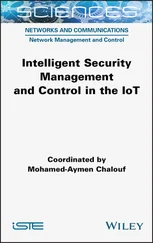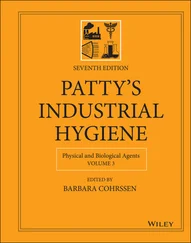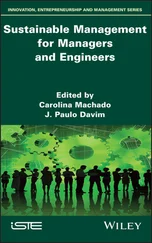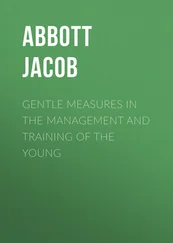Use Conditions. Being aware of customer uses and commensurate with the hazard of the product, the customers' ability to handle product safely is key to accomplishing good PS goals. Having a formal system in place to respond to customer questions and indications of misuse are also integral to a good risk management program. Considering the feedback you have received in the ongoing development of your hazard communication or handling documents for the customer can result in improved risk management and communication.
3.4 Interdisciplinary/Organizational Issues
Based on the aforementioned elements, it is clear that implementing PS takes a cross‐functional approach and affects many departments or functions in a company. This requires significant effort in a company to maintain an understanding of each function's role and to assure each function is performing the activities needed. Furthermore, the PS function itself can be comprised of several distinct disciplines including Toxicology, Occupational Medicine, Industrial Hygiene, and Regulatory Affairs. If specialists in these fields are not within the PS function of an organization, the different forms of expertise will need to be available, or those doing PS will need to develop a working proficiency in the mentioned areas. This is a challenge Occupational Hygienists are familiar with. It is quite normal for a hygienist to bring together engineering, management, hourly, and union personnel to solve a problem or implement a solution. These skills and experience translate well to working in a PS program.
3.5 Regulatory Foundation for Product Stewardship
There are no specific regulatory requirements for chemical producers or other manufacturers to have PS programs. However, if one can agree to describe the elements of PS as discussed in this chapter, then there are clear regulatory requirements that support individual elements of the concept.
At this time, in the United States Federal statutory authority to control the environmental impacts of products downstream from the manufacturing operations as contrasted to manufacturing locations and operations is limited. SHE regulation has traditionally focused on regulating manufacturing facilities. Transportation regulations apply to the portion of the products in commerce that meet specific Department of Transportation (DOT), or equivalent transportation agencies, hazard classifications. However, some select elements of PS are becoming increasingly evident in regulations, or requirements, involving the life cycle aspects of products. These range in scope from individual chemicals to manufactured articles. There is a new emphasis or focus on human and environmental protection through the regulation of products. As an example the revised Toxic Substances Control Act (TSCA), now known as the Lautenberg Chemical Safety Act (LCSA) is resulting in a broader scope of authority for the US Environmental Protection Act to regulate the commercialization and use of existing chemicals (2).
Much of this regulatory activity is outside of the North American region, best exemplified by registration, evaluation, and authorization of chemicals (REACH) in the EU but it has impact on this region as business is increasingly global in nature. Details on REACH are found later in this chapter.
At the heart of PS is risk management through the communication of hazards and handling recommendations to those handling chemical products throughout the supply chain. Hazard communication regulations exist in the many parts of the world. The fundamental requirement to develop and distribute SDSs for chemical substances and products and to supplement this information with product labeling are relatively mature and understood by many. It should be noted that even this requirement is still relatively new as evidenced by the Hazard Communication and WHIMS programs in the NAFTA region and the EU regulations in continental Europe. These requirements as written have only existed since the mid‐1980s. There are product labeling requirements administered by a range of agencies including the US Environmental Protection Agency (EPA), consumer product safety organizations, and food and drug agencies on a global basis (3).
The landscape and requirements for basic hazard communication have changed as GHS is implemented. GHS is an acronym for The Globally Harmonized System of Classification and Labeling of Chemicals (4). It was first adopted as an International Standard in 2002 and has been undergoing revisions and implementation by countries since that time. The GHS is a system for standardizing and harmonizing the classification and labeling of chemicals. To the extent that countries adopt the GHS into their laws, the regulatory changes would be binding for covered industries. However, “GHS compliant” Safety Data Sheets and labels are becoming a minimum for suppliers from many companies. It is anticipated that ALL existing hazard communication systems will need to be changed in order to apply the GHS. New country regulations will be based on GHS and generally consistent from region to region. The global effort required for this transition including input of product stewards and health professionals such as IHs has been very significant and may stay that way for some time.
Providing detailed hazard information to customers and/or other product handlers, including the general public continues to be a growing business to business requirement. The common elements of PS have expanded this aspect to include a higher level of responsibility to assure proper handling is understood and in fact practiced in the supply chain. In fact, a fundamental and somewhat contentious element of the Chemical Industry Association of Canada (CIAC) and ACC programs when first developed was the requirement to consider ceasing to do business with those who do not demonstrate the ability to safely handle the products sold to them. The first efforts at risk management include working with customers to foster safe handling of products and identifying and responding to recognized misuse of a product. However, if one failed in those efforts they should consider ceasing business with the offending company.
Hazard assessment of products is a fundamental element of any PS effort. While hazard communication and transportation regulations require some fundamental hazard data to be generated to determine the physical and health hazards of a product, there is no specific minimum set of data required in the United States for most existing chemicals. The global landscape for hazard data for new chemicals, as defined by multiple chemical control regulations, have moved toward minimum data sets in some countries and is generating the need for additional data to meet risk assessment requirements. In the US registered pesticides are an exception. When developing a “new chemical” as defined by the various chemical control regulations a producer is required to submit what data are available, in the United States, and specific hazard data sets in Canada and the EU depending on the volume and other factors such as specific uses. PS takes this element much further and in essence requires companies to do what is right, “commensurate” with the anticipated hazards and risk. In other words, increased risk requires additional hazard information to be developed and made available in the appropriate manner to product users and in many cases the public. Business‐to‐business or commercial requirements are also increasing the need for increasing hazard data for products.
Considering and understanding the exposure potential resulting from the practices of all parties in the supply chain, including the customer, is integral to the concept of PS. There are few regulations that require specific producer activities throughout the supply chain. In the recent past, understanding chemical uses and working with users was not generally required by any regulation. This has been changed since the US TSCA was revised by the LCSA and REACH regulations were implemented in the European Union. To meet new requirements on a global basis chemical producers must determine general use and exposure conditions for their products, and develop chemical safety assessments based on this information.
Читать дальше












